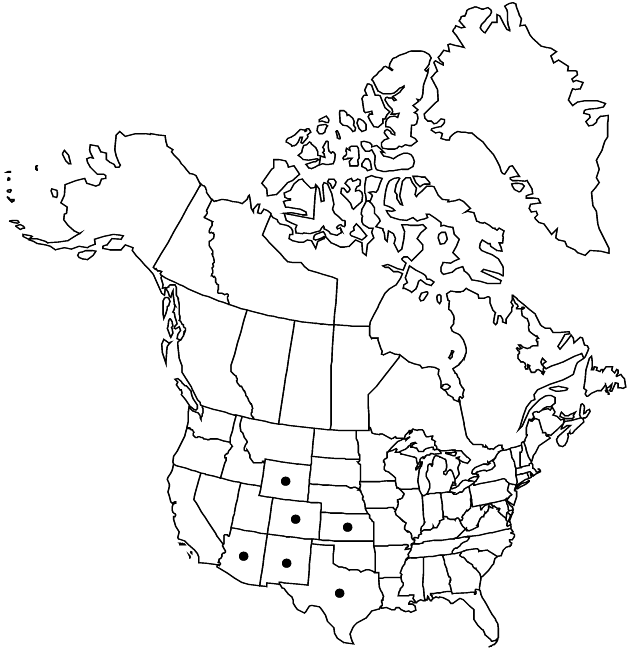Dieteria canescens var. glabra
Sida 20: 1397. 2003.
Annuals or biennials, rarely short-lived perennials. Stems usually 1 (sometimes more), erect, glabrous, puberulent, or canescent, sometimes sparsely stipitate-glandular; branches ascending. Mid leaf blades lanceolate to linear. Peduncles equaling or longer than involucres. Involucres campanulate to broadly turbinate, 6–10 (–12) mm. Phyllaries in 4–8 series, usually appressed, sometimes spreading, rarely reflexed; apices usually glabrous or moderately stipitate-glandular, rarely canescent. Ray florets pistillate, fertile. Cypselae sparsely appressed-hairy.
Phenology: Flowering Jul–Sep.
Habitat: Grasslands, creosote bush scrublands, pinyon-juniper woodlands, pine forests
Elevation: 1000–2300 m
Distribution

Ariz., Colo., Kans., N.Mex., Tex., Wyo., Mexico (Chihuahua).
Discussion
Variety glabra is found in the western Great Plains, southern Rocky Mountain foothills, and Chihuahuan Desert.
Selected References
None.